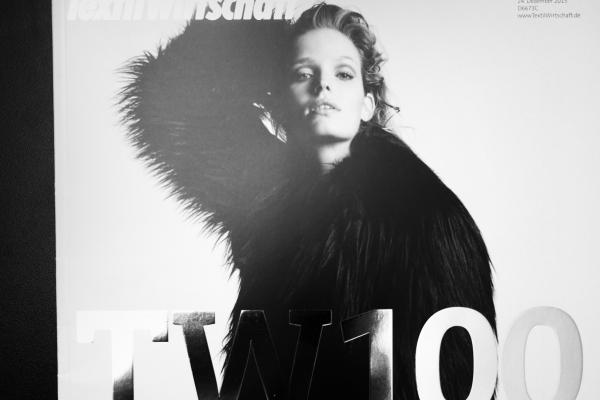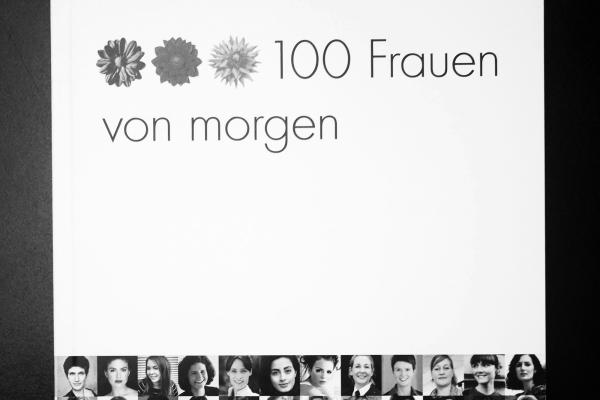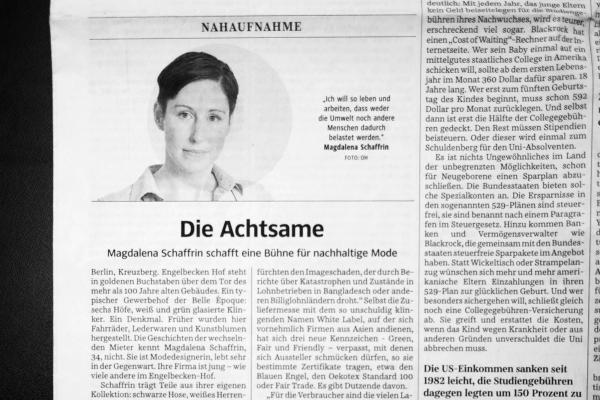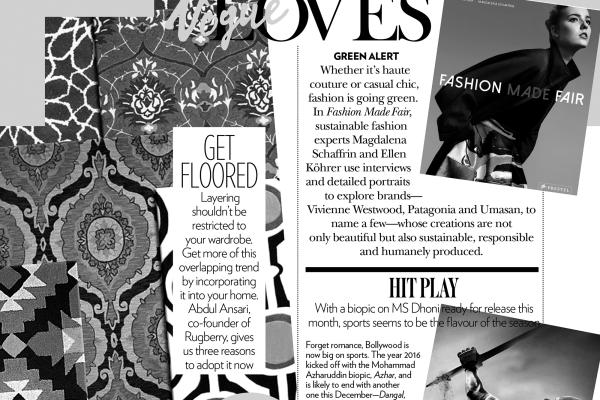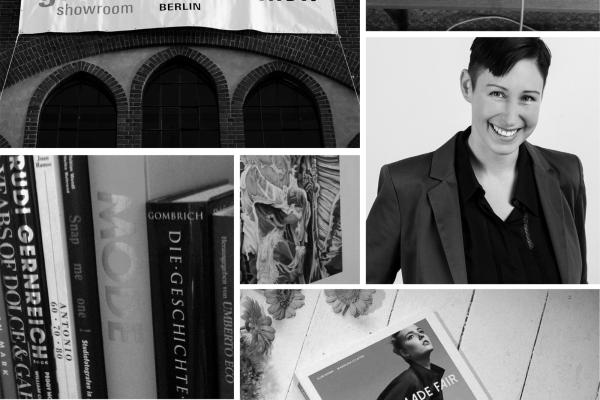Why Good Design Matters
Lissome
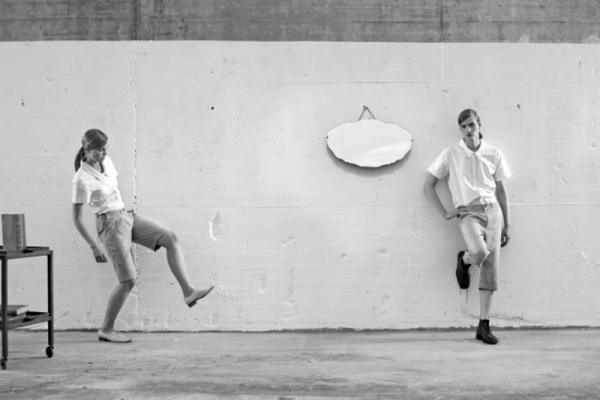
Magdalena Schaffrin is one of Germany’s most influential sustainable fashion pioneers and a true jack-of-all-trades. The trained fashion designer who started her namesake label in 2007, is also the founder of the Greenshowroom, a fair for sustainable high-fashion, and the creative director of the Ethical Fashion Show, Europe’s largest sustainable fashion fair. Both fairs take place bi-annually in Berlin. Earlier this year, Magdalena Schaffrin co-published “Fashion Made Fair”, a beautifully curated coffee table book showcasing fashion brands that unite sustainable production processes with high-quality design. I meet Magdalena on the roof terrace of her Berlin home, and whilst we overlook the city and the nearby leafy Kreuzberg neighbourhood, we talk about what makes great design and how healthy, fair and well-designed fashion could become the new paradigm in the not so distant future.
Dörte: Could you tell me a bit about your background? What was your path to sustainable fashion?
Magdalena: When I grew up in the 80’s, my parents were both active in the environmental and peace movements. At home there were always a lot of political discussions, we were cycling everywhere and my parents made sure that we bought our food locally in the market. I grew up in southern Germany where Waldorf schools and Rudolf Steiner were very popular and I sort of grew up among early day eco-pioneers. So that's my family background and the system of values in which I grew up in. However, initially, this did not affect me very much. After I graduated from high school I decided to study fashion design, simply because I enjoyed engaging with clothing and fashion.
You studied fashion design at the University of Art and Design Burg Giebichenstein in Halle, at Denmarks Design Skole Copenhagen and at the University of the Arts in Berlin. Who are your role models in design and what is your understanding of design?
I have no direct role models. Of course, there are a number of people, I get inspired by like the founder of the Sekem Project, Rick Ridgeway from Patagonia or Bruno Pieters and fashion designers whose style I like. First and foremost the Belgian designers such as Ann Demeulemeester or avant-garde designers like Maison Margiela or Frank Leder in Germany. But these are not necessarily examples of designers who speak specifically about responsibility and sustainability, as I do in my work. During my studies, I did not explicitly reflect upon an ecological lifestyle and the notion of sustainability nor lived accordingly, but the issue of the responsibility of designers concerned me on a philosophical level. Especially in terms of style. The responsibility of architects has always been widely discussed in cultural history. When an architect builds a house that impresses on a cityscape for several hundred years, it does affect many people. But it is similar with a fashion designer. If a fashion designer creates a garment that is sold via a big fashion brand, then s/he reaches many people. Fashion is not as long-lasting as architecture of course, but the power of fashion communication is often underestimated. As fashion equally determines our surroundings and has a huge impact on people, I believe that designers have a responsibility to create substantial designs. That's what fascinates me about fashion. You can address everyone with fashion because every person gets dressed. With fashion, you can change a lot.
After graduation, you founded your own fashion label *magdalena schaffrin in 2007. What was your initial motivation to start up your own sustainable label and what were the key experiences that you gained from it?
When I thought about what I really wanted to do after my graduation and where I wanted to yield my energy, there was a strong desire to do something meaningful. And because there were few designers at the time, who worked sustainably were fashionable, I decided to start my own label. In the first couple of years after university, I worked as a graphic designer, but I already started preparing the concept for my label. My initial thought was: "I design a beautiful and fashionable collection and I don’t comment on the fact that it is sustainable, simply because it is the self-evident approach for me.” I addressed it all as naive as it sounds and I was like "Okay, I'm going to a fabric fair, buy sustainable materials, design my first collection and then it's all very easy." And I actually only realized at the fabric fair that it wasn’t so easy after all. At the fair, there were many Ökotex certified fabrics. But somehow I was sceptical, mainly because the selection was so big and there were also a lot of polyester fabrics in the selection. And this made me wonder what kind of criteria were informing the Ökotex 100 certification by then. So I started talking to the producers at the fair and found out quickly that the topic of ecological textile production is far more complex than I had first assumed. Some of the producers came up to me asking: "Would you like to see the eco-collection or the fairtrade collection?" And I thought I would like to see a combined eco/fair trade collection instead of having to choose between one or the other. I then had to learn the ropes and I had to decide which criteria of sustainability I wanted to apply for my own fashion label. I quite quickly realized that using only the Ökotex 100 Standard wouldn’t satisfy me. What then became important for me was the use of sustainably produced natural fibers, fair working conditions and the principle of "slow fashion" in terms of durable design and high quality. However, by now, the ÖkoTex 100 Standard has further developed and improved their criteria.
You launched the Greenshowroom in Berlin in 2009, that was first held at Hotel Adlon. How did this happen and what was your intention for creating a sustainable fashion show?
I drafted the concept for the Greenshowroom together with handbag designer Jana Keller of "Royal Blush” because we felt that our labels were neither properly placed at a conventional fashion fair nor at a conventional eco-fashion fair. The collaboration turned out really well and we got started fairly quickly. Our first meeting was in winter and in the following summer we held our first event.
And then you addressed Hotel Adlon directly by saying: “This is our concept. Do you want it?”
Yes, but not only Hotel Adlon. We contacted all 5-star hotels in Berlin. In the end, it was Hotel Adlon who made us a very good offer. For the first event, we had a separate area on the third floor. The visitors were driven up in an elevator by a porter. It was fun. The Greenshowroom arose from a need to create a platform that equally represented fashion and sustainability. I then also quickly learned that you can communicate well about the topic of sustainability.
Nonetheless, there are still numerous labels that don’t communicate that they produce sustainably because they don’t want to be put into an eco-niche…
Yes, this is still a big issue, at least in Europe. In the USA, this rarely exists. In Germany, we immediately think of the term ”eco-chic". This look does still exist as well as the old labels that embody it. I think that many labels of the past focused on fighting poverty and creating fair jobs in developing countries. The younger generation of sustainable label founders has since realized how essential good design is for appealing to customers. I would say that the labels who started up in the 70’s wanted to create a different look. Wearing dungarees was a symbol through which you could communicate to the outside world: "I'm different, and I belong to the environmental movement." And this same consumer audience still exists today, and so do the labels of the 70’s who still cater for this audience. However, many have them have now realized that they have to also appeal to the needs and expectations of a younger audience. And sometimes they do that quite successfully, as in the case of Hessnatur.
In 2011 you sold the Greenshowroom to Messe Frankfurt and then additionally conceived the Ethical Fashion Show for Messe Frankfurt. Since 2012 both trade fairs take place twice a year in Berlin at the same time of Mercedes-Benz Fashion Week. What are the advantages of a cooperation with Messe Frankfurt?
Frankly, we hadn’t even thought about the possibility of selling the concept (laughs). We had been wondering why Messe Frankfurt always came to visit the Greenshowroom. Well, and at some point, they approached us directly and asked if we were interested in a collaboration. And of course, it was interesting for us because Messe Frankfurt is an international company that is active in 150 countries. And through a collaboration with Messe Frankfurt, we suddenly had the means to make the fashion fair more professional, more financially secure and more international. In principle, these were the three reasons why we decided that it made sense, to sell our concept to Messe Frankfurt and to continue to work on the concept on behalf of Messe Frankfurt. Our business was only one and a half years old and after only three seasons it was already sold.
You were in the spirit of the times.
Yes, indeed. It was really exciting, how many positive reactions we encountered when we contacted the first labels.
Which criteria do fashion labels have to fulfil in order to exhibit at the fair?
They basically have to meet the same criteria that I’ve described to you for my own collection. The basic rules are: synthetic fibers have to be recycled fibers, natural fibers have to be ecologically grown and the production processes have to be eco-friendly and socially fair. Upcycling is welcome. Transparency is the third pillar beside ecological and social criteria. Overall, a minimum of 70% of the exhibits needs to meet our sustainability criteria.
Together with journalist Ellen Köhler you’ve recently published the Coffee Table Book "Fashion Made Fair". What lead to your collaboration and why did you decide to focus on the importance of high-quality design?
In a way it’s obvious. Fashion, of course, is sold through design. And only through design, I believe. When we buy fashion, first of all, we look for a garment that fits us, that suits us and that we like the look of. Then the price has to be right and the brand has to be right. The criteria for sustainability are right at the end of the psychological process of shopping for clothes. Sometimes the process even starts with the brand. When I think about where I want to go shopping, I start to think about the brand. Which brand attracts me? And where can I buy it? Few people research ecological and social criteria. Although there are more and more conscious consumers, I don’t think that they would buy clothing that meets the ecological and social criteria, if the design isn’t equally good. Today it is hip to buy food and clothes consciously. But people don’t necessarily want to communicate through their clothes that they are eco-activists and part of a movement. I think it is self-evident that good design is important, nonetheless, I am still asked in almost every interview, whether the image of sustainable fashion is still as bad. That’s why we decided to create a book that simply shows great labels and great design.
How did you come up with the selection?
First of all, we created a long list of labels that create high-quality designs. Then we decided to categorize the labels according to different criteria such as social criteria, environmental criteria, recycling/upcycling and created an international selection as the book is being published in Germany, Europe, and the USA. In addition, we interspersed the book with various expert interviews that address the important topics of sustainability in fashion. But we didn’t conceive it as a heavy theoretical book about sustainable fashion. There are many insightful ones out there already. We wanted our publication to be an entertaining and visually stunning coffee-table book, which you can browse and be inspired by.
In one of the interviews, you talk to Belgian designer Bruno Pieters, who openly exposes his brand’s entire supply chain, about transparency. To what extent do you think transparency can contribute to increasing consumer awareness?
I believe that transparency is one of the most important issues because transparency builds trust. We can’t communicate sustainability and make ourselves understood, without being trusted.
These days, most fashion companies still don’t operate sustainably. What do you think would need to change so that sustainable production could become a general trend?
That's always the big question, where do you start. I think, there is not one solution, but a number of measures that can help to raise awareness and move the topics into the mass market. First of all, it is important that you have pioneer companies like People Tree, who show that it is possible, that you can produce in ecologically, socially and economically sound ways. Secondly, it is essential to have political legislation that leads the fashion industry to improve their conditions of production. Then there is the work of NGOs. A Greenpeace campaign can literally force companies to improve. Greenpeace is a tough nut that checks and verifies and Greenpeace bites! (laughs) And, of course, the press plays an important role in creating a change of awareness among consumers.
Currently many exciting innovations are being discussed, such as cradle-to-cradle technologies, new material innovations or new forms of consumption such as the leasing of clothing. What is your own vision of the future for the fashion industry?
In my vision, there is no more conventional fashion. There is only fashion that is sustainable. Of course, this is a very big vision, but I still hold on to it. I believe that there are many possibilities to gradually improve the industry. You have to look at it from a global perspective. There are more and more people living on this earth. All these people need space and food and we can’t continue to treat our world’s natural resources in such wasteful ways.
Do you think of your work as political?
I think, I'm less political, I mainly deal with beauty. I have the luxury to engage with beautiful things: With fashion and its affirmative representatives. My work is not political, but maybe it influences politics. I don’t know if I change the society but I think I change the economy.
What are your plans for the future?
I am currently advising German retailer Manufactum in changing over their fashion range. They have since made a real turnaround. Of course, it is great to work together with a company like Manufactum, that already works sustainably in the sense of high quality and durability. To broaden this approach with a more modern understanding of sustainable fashion is fulfilling work that I would like to carry forward. I could also imagine working as a consultant for conventional retail. Many sustainable fashion brands would like to sell to conventional retail outlets, but those are often still anxious to engage with sustainable brands. There is a fear of doing something wrong, to get negative media attention and thus losing the trust of consumers. I think it would be a great first step to assess supply chains and not even shout it from the rooftops. And I think I could be of great help with that. Well, and who knows, perhaps someone approaches me again out of the blue with some great idea. As with Ellen Köhrer's call a year ago: “Hey Magdalena, let’s go for a walk. I have something to talk to you about!” (laughs)
DETAILS:Erschienen am 6. Oktober 2016 in Lissome, Interview geführt von Dörte Lange. Online abrufbar: www.thelissome.com/blog/2016/10/6/expert-qa-how-can-healthy-fair-and-well-designed-fashion-become-the-new-paradigm
